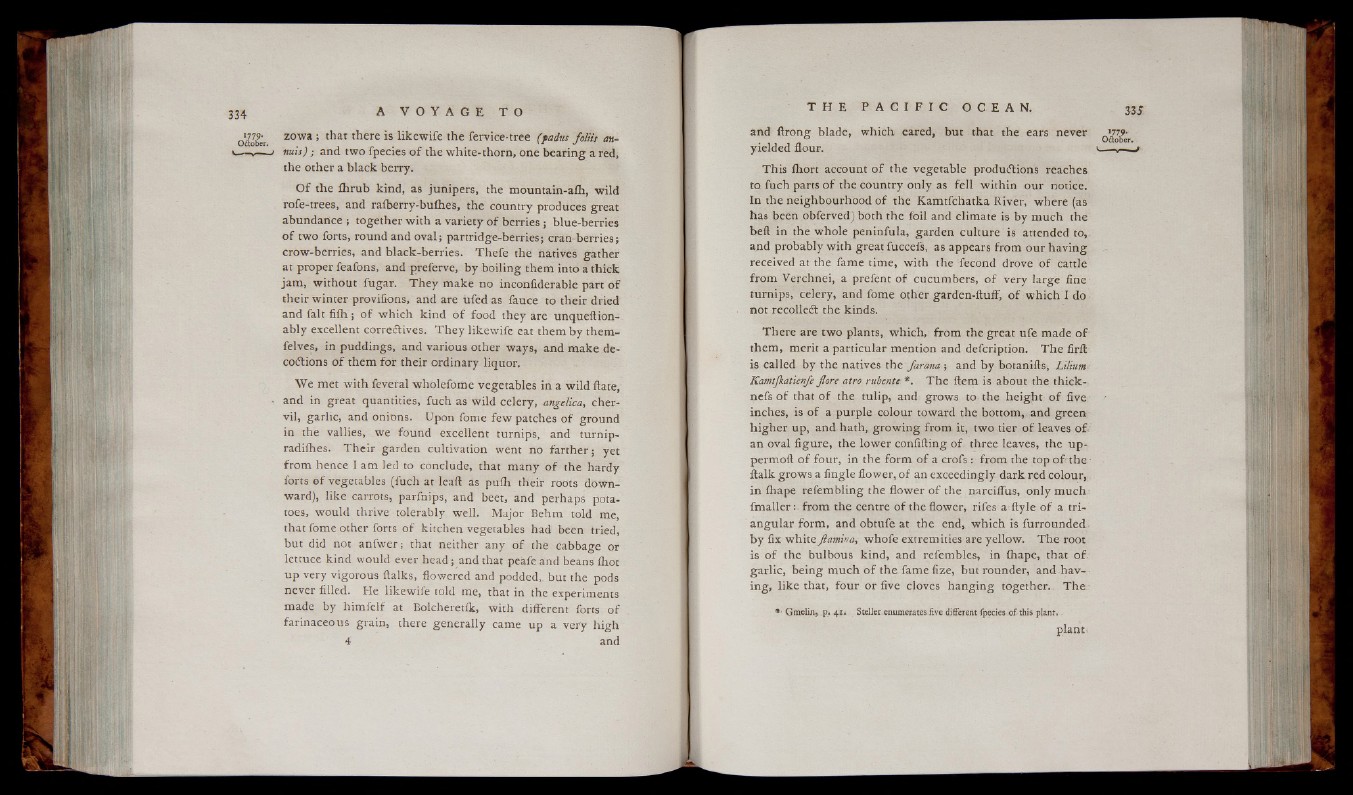
zowa ; that there is likewife the fervice-tree ( f adits foliis annuls)
; and two fpecies o f the white-thorn, one bearing a red,
the other a black berry.
O f the ihrub kind, as junipers, the mountain-alh, w ild
rofe-trees, and raiberry-buihes, the country produces great
abundance ; together w ith a variety o f berries ; blue-berries
o f two forts, round and oval; partridge-berries; cran berries;
crow-berries, and black-berries. T he fe the natives gather
at proper feafons, and preferve, by boiling them into a thick
jam, without fugar. T h e y make no inconfiderable part o f
their winter proviiions, and are ufed as fauce to their dried
and fait f i ih ; o f w hich kind o f food they are unqueftion-
ably excellent correctives. T h e y likewife eat them b y them-
felves, in puddings, and various other ways, and make decoitions
o f them fo r their ordinary liquor.
We met with feveral wholefome vegetables in a wild ftate,
and in great quantities, fuch as wild celery, angelica, chervil,
garlic, and onions. Upon fome few patches o f ground
in the valiies, we found excellent turnips, and turnip-
radilhes. T h e ir garden cultivation went no far ther ; yet
from hence I am led to conclude, that many o f the hardy
forts e f vegetables (fuch at lead as puih their roots downward),
like carrots, parfnips, and beet, and perhaps potatoes,
would thrive tolerably well. Major Behm told me,
that fome other forts o f kitchen vegetables had been tried,
but did not a n fw e r ; that neither any o f the cabbage or
lettuce kind would ever head ; and that peafe and beans ihot
up very vigorous ftalks, flowered and podded, but the pods
never filled. He likewife told me, that in the experiments
made by himfe lf at Bolcheretlk, with different forts o f
farinaceous grain, there generally came up a very high
4 and
and ftrong blade, which eared, but that the ears never
yielded flour.
This fhort account o f the vegetable productions reaches
to fuch parts o f the country only as fe ll within our notice.
In the neighbourhood o f the Kamtfchatka River, where (as
has been obfervedj both the foil and climate is by much the
belt in the whole peninfula, garden culture is attended to,
and probably w ith great fuccefs, as appears from our having
received at the fame time, with the fecond drove o f cattle
from Verchnei, a prefent o f cucumbers, o f very large fine
turnips, celery, and fome other garden-ftuff, o f which I do
not recalled: the kinds.
The re are two plants, which, from the great ufe made o f
them, merit a particular mention and defeription. T h e firfl:
is called by the natives the farana ; and by botanifts, Lilium
Kamtjkatienfe Jlore atro rubente *. T he ftem is about the thick-
nefs o f that o f the tulip, and grows to the he ight o f five
inches, is o f a purple colour toward the bottom, and green
higher up, and hath, g rowin g from it, two tier o f leaves off
an oval figure, the lower confiding o f three leaves, the up-
permoft o f four, in the form o f a crofs : from the top ofithe
ftalk grows a fingle flower, o f an exceedingly dark red colour,
in ihape refembling the flower o f the narciffus, only much;
fm a lle r : from the centre o f the flower, rifes a ityle o f a triangular
form, and obtufe at the end, which is furrounded-
by fix white Jlamina, whofe extremities are yellow. The root
is o f the bulbous kind, and refembles, in ihape, that o f
garlic, being much o f the fame fize, but rounder, and having,
*779-
Oétober.
V----y— .J
lik e that, four or five cloves hanging together.. T he ■
*■ Gmelin, p. .41. Steller enumerates five different fpecies of-this plant..
plant